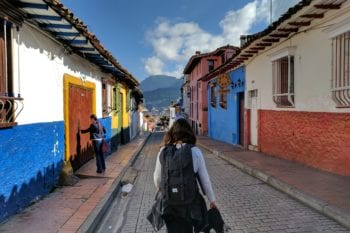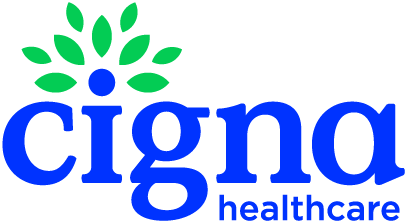Overview of Colombia Healthcare System
 The Colombia healthcare system is one of the world's best. The World Health Organization ranks it as the 22nd most efficient in the world, above Canada, the United States, and Australia. Colombia’s hospitals are among the best in South America. In particular, Medellin has some of the best facilities in Latin America. The city is also well known as a destination for cosmetic surgery and transplant surgery. Colombian physicians receive an excellent education and many complete a part of their training abroad. It’s common for physicians to be bilingual in Spanish and English. Colombia’s healthcare system operates a public health insurance plan called Entidades Promotoras de Salud (EPS).
The Colombia healthcare system is one of the world's best. The World Health Organization ranks it as the 22nd most efficient in the world, above Canada, the United States, and Australia. Colombia’s hospitals are among the best in South America. In particular, Medellin has some of the best facilities in Latin America. The city is also well known as a destination for cosmetic surgery and transplant surgery. Colombian physicians receive an excellent education and many complete a part of their training abroad. It’s common for physicians to be bilingual in Spanish and English. Colombia’s healthcare system operates a public health insurance plan called Entidades Promotoras de Salud (EPS).
EPS, Entidades Promotoras de Salud, is administered by various insurance companies, including SURA, Comfenalco, and Coomeva. The EPS program is available to all residents at a low cost. For instance, the premium for retirees is 12% of the declared pension income. As well, there is no maximum age limit to apply for EPS coverage.
Does Colombia Have Universal Health Care?
In the past 40 years, Colombia's healthcare system has grown by leaps and bounds. One of those significant advances was the 1993 reform to transform the structure of universal public healthcare funding. Since then, employees have been obligated to pay into health plans, which employers also contribute to. As a result, this broadened public healthcare coverage from less than 21% of the population pre-1993 to 65% in just 10 years.
These reforms stemmed in part from changes to the national constitution earlier in 1991. During that time, a piece of legislation known as Law 100 was implemented. It was responsible for widely extending universal health coverage to a broader part of the population. In particular, an article of Law 100 mandated that health insurance be compulsory, that providers must have administrative autonomy, and that patients must have free choice among providers. While Law 100 brought many challenges, especially financial ones, it’s widely credited with bringing important reforms.
Costs of the Colombia Healthcare System
In general, healthcare in Colombia is very affordable. About 20% of government spending is directed towards healthcare. Additionally, approximately 5% of Colombia’s GDP is related to healthcare. This level of investment has made on-the-ground costs for patients accessible.
Under the EPS public health insurance system, there is a three-tiered payment system. These payments cover co-payments for lab tests, diagnostic imaging, specialist visits, and medications. The copay rates are approximately $1, $4.25, and $11.15. The applicable rate is dependent on income and most retirees fall into the middle tier. For those without health insurance, out-of-pocket costs start at about $50 for a consultation with a physician.
The Pros and Cons of Public Care
There are significant differences in the standard of care between rural and urban areas. For instance, in Bogota, Medellin, and Cali, nearly 100% of the public is covered by health insurance. As well, the standards of healthcare are excellent. But in rural areas, health coverage is more limited. Furthermore, the standards of care are very limited and clinics may be basic. For those who can afford it or who have insurance, being treated in a private facility means a more comfortable, experience at a modern facility. While many Colombian doctors do speak English, at private facilities you’re all but guaranteed to have multilingual staff. As well, wait times are considerably shorter.
Who is Eligible for Colombia Healthcare
All legal residents in Colombia are required to sign on with EPS. Expats can opt out but they must show proof of coverage through another healthcare plan. Those who must opt-in are required to pay 12.5% of their gross monthly income to the EPS. For those employed with a Colombia company, that amount goes down to about 4% as the employer pays the rest.
Each patient chooses which EPS-registered company they want to have as their insurance administrator.
Healthcare Options for Expats and Foreigners
In order to apply for EPS public health coverage, new residents must:
- Obtain a visa: EPS coverage is only available to legal residents and citizens. As such, you must enter the country with an appropriate visa to your situation which allows you to work. Other common visas include options for retirees, real estate purchasing, business ownership, and business investment. Count on a minimum of two weeks - and sometimes a lot more - for your visa to be processed.
- Get your identification card or cédula: Once you have your visa in your passport and enter the country, you must go to a Migración (immigration) office to register your visa. Here, you will apply for your cédula or identification card. You will need to complete a form, pay a fee, have digital fingerprints taken, and a photo. If possible, bring a local friend or hire a translator to accompany you if you don’t speak Spanish.
- Wait for processing: Next, it’s time to wait. The process usually takes two to four weeks for your application to be processed. You will pick up your card at the same immigration office.
- Sign up with EPS: With your cédula in hand, you may then sign up with EPS. First, you must choose an insurance administrator and make an application with them. Once you are approved, your coverage starts immediately. You won’t be issued a health insurance card. Your cédula identification is all you need to make an appointment.
In addition to the EPS basic health insurance system, there are many add-on plans which expats can buy. These act like supplemental private International Health Insurance. With these plans, you are entitled to faster service at more upscale facilities. Not all add-on plans are available to all patients. For instance, not all accept people over the age of 60 into their programs.
Also Read: Health Insurance for Colombian Expats Living Abroad
Best Health Insurance in Colombia for US Citizens

Xplorer Worldwide Medical Plan
- Premium Benefits, Coverage and Service
- Define your deductible and prescription benefits
- For Foreigners in the US or US citizens abroad
Best Colombia Medical Insurance for Foreigners

Cigna Global Insurance Plan
- The flexibility to tailor a plan to suit your individual needs
- Access to Cigna Global’s trusted network of hospitals and doctors
- The convenience and confidence of 24/7/365 customer service
Challenges and Changes
Despite the many success stories in Colombia’s healthcare system, there are still several areas where struggles remain. Perhaps none is so serious as malaria. Waterborne diseases such as malaria thrive in the lowland and coastal area and nearly 85% of Colombia is vulnerable to the disease. Colombia has an estimated 250,000 cases a year, with an estimated 3 in 100,000 cases being fatal.
Malaria isn’t the only serious public health concern in Colombia. Both Yellow Fever and Dengue Fever are ongoing concerns. The government regularly has Yellow Fever vaccination campaigns. As well, malnutrition, and specifically childhood malnutrition, remains a prominent problem. Nearly 21% of children under the age of 5 years old suffer from moderate to severe malnutrition. 23% of children under 5 suffer from iron deficiency anemia.
Related:
Author / Editor: Joe Cronin, Founder and President of International Citizens Insurance. Mr. Cronin, a former expat, is an authority in the areas of international travel, and global health, life, and travel insurance, with expertise in advising individuals and groups on benefits for today's global workforce. Follow him on LinkedIn or Twitter.
